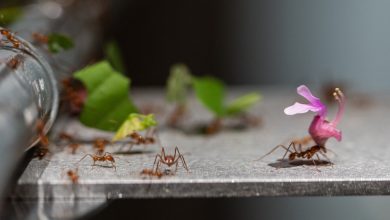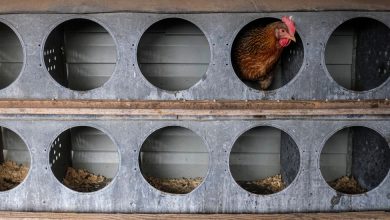Gene Therapy May Offer Birth Control for Cats

For all the cats who share our homes as companion animals, there is a vast shadow world of strays — a sprawling and fast-breeding crowd.
Their lives are plagued by the threat of infectious diseases, predators and fast-moving cars. And they are major predators themselves, hunting down millions of birds and small mammals annually.
In the United States, volunteers are especially active in trapping the cats, bringing them to clinics to get surgically sterilized, and then returning them to their colonies. But controlling stray cat populations is costly and logistically cumbersome. Many communities, especially in countries outside the United States and Europe, lack the veterinary and economic resources to coordinate such efforts.
“Coming up with an alternative to surgery has been a goal for a lot of people for decades, and there just hasn’t been anything else that’s proven to be effective,” said William Swanson, director of animal research at the Cincinnati Zoo & Botanical Garden.
Such a method might finally be on the horizon. In a study published Tuesday in the journal Nature Communications, a single shot of a gene therapy prevented pregnancy in cats for at least two years. The study was extremely small: Six female cats that received the gene therapy shot were compared to three who did not.
By limiting the study size to just a few cats, the researchers were able to track each one extensively, analyzing 15,220 freeze-dried poop samples for estrogen and progesterone levels and examining 1,200 hours of video of mating behavior, Dr. Swanson said.
The contraceptive shot delivers a gene that enters muscle cells, enabling them to pump out a substance called anti-Müllerian hormone, or AMH, which interferes with the development of egg follicles in the ovaries.
Researchers cautioned that much more research would be needed to test the preliminary findings. And if larger studies confirm that the treatment — the first gene therapy developed specifically for animals — is safe and effective over a cat’s lifetime, controlling cat populations won’t require the surgical expertise of veterinarians, Dr. Swanson said.
David Pépin, a reproductive biologist at Massachusetts General Hospital in Boston, was originally studying AMH as a potential therapy for ovarian cancer, but decided to look at its effect on ovaries. When he injected the hormone into mice, their ovaries shrunk to newborn size, suggesting AMH might have contraceptive properties.
Dr. Pépin is investigating the potential use of AMH in people, not as a gene therapy but as a pill or injection that must be taken continuously. Most contraceptives today prevent ovulation, but AMH would act earlier, blocking follicles from maturing.
He thinks that it might be useful for women who could not take birth control pills with progesterone or estrogen for medical reasons or that it could help women undergoing cancer treatments preserve their fertility. “It’s a hormone that we didn’t get to play with before that potentially has many different applications in women’s health,” he said.
As a gene therapy that could be permanent, the use of AMH in people is unlikely. “But it’s actually the perfect tool to control cat overpopulation,” he said. Four of the cats in the study did not show behaviors indicating they were ready to mate, and two allowed male cats to mate with them, but did not ovulate.
Dr. Pépin and Dr. Swanson, an expert in feline reproduction (and a scientific advisory board member of the Michelson Found Animals Foundation, which funded the work), are planning a larger study that could support an application to the Food and Drug Administration to consider approving the therapy to be marketed for use in cats.
They are also testing the therapy in kittens, which can be treated starting at eight weeks of age, as well as in dogs, which also have enormous stray populations, particularly in other countries.
“This is really exciting, and I hope it will pan out,” said Julie Levy, a veterinarian at the University of Florida College of Veterinary Medicine in Gainesville, who was not involved with the study. “Wouldn’t it be great if we could send out a technician into the field to inject cats and then let them go?”
The study is an example of the Michelson foundation’s practice of “throwing a lot of big money at the problem” to find nonsurgical contraception for stray cats and dogs, said Dr. Levy, who works with cats in outdoor colonies and shelters, both in the United States and abroad.
But she cautioned that there was still much to learn from a larger study, such as how long the shot lasts, whether it is as safe as it seems, and what proportion of cats it will actually protect from pregnancy, “because it probably won’t be 100 percent.”
Others note that it might not be quite so easy. If the shot is effective, long-lasting and cheaper than spay and neuter surgery, it could be very valuable, said Autumn Davidson, a veterinarian at Cornell’s College of Veterinary Medicine in Ithaca, N.Y. But to receive the injection, animals have to be captured, and queens who are adept at evading people’s traps might still make population control a struggle.




